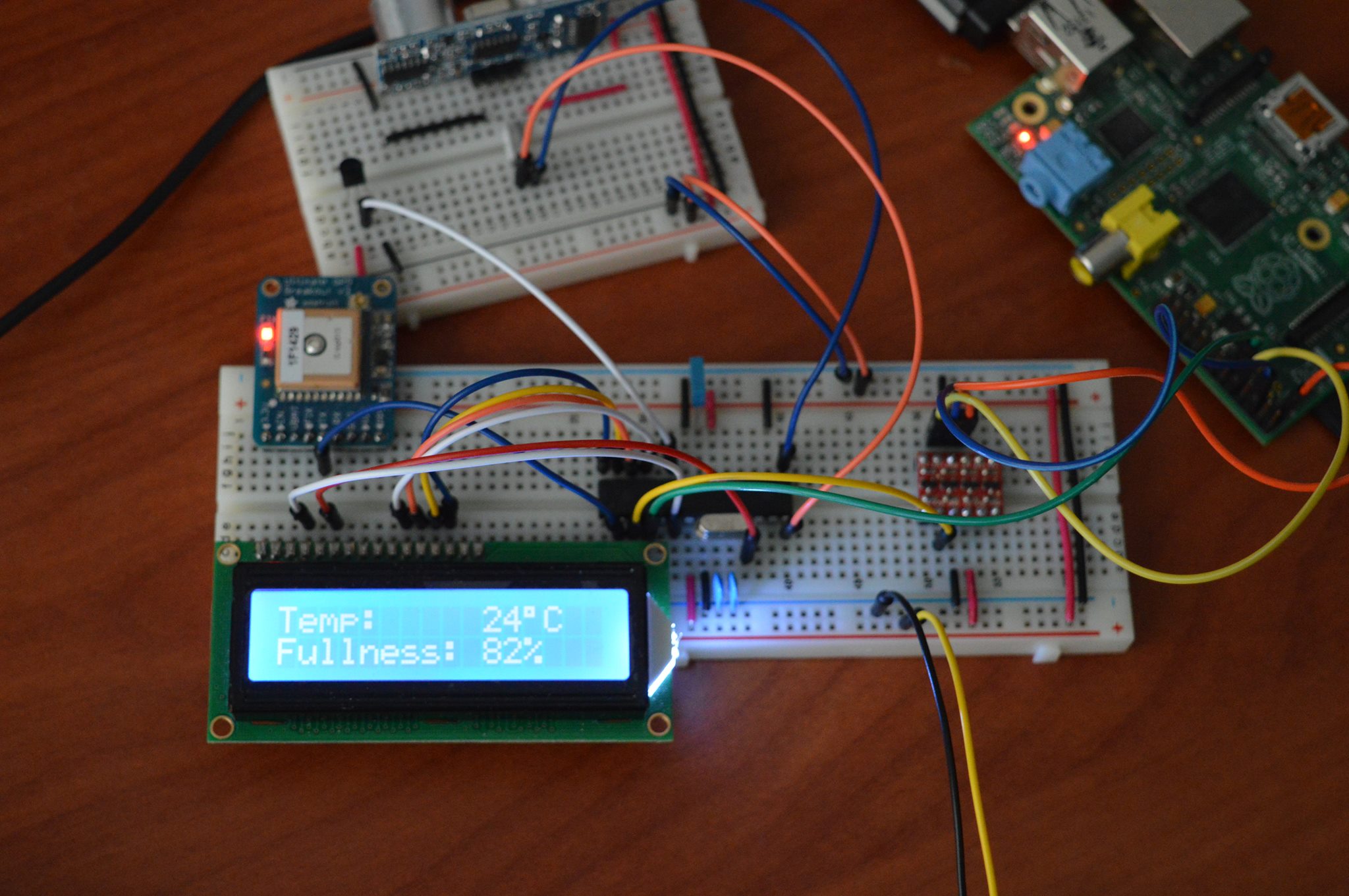A Distributed Garbage Collection System was my group's Fourth Year Design Project for Electrical and Computer Engineering (ECE) at the University of Waterloo. For our project, we chose to tackle the problem of littering from an engineering standpoint. Our rationale for the accumulation of litter was that garbage bins are distributed suboptimally within a given area.
Our project sought to solve this littering problem through the design and implementation of a crowd-sourced data-driven management system for allocating garbage bins within a given area. This solution consisted of 2 components: the garbage bin embedded system and the garbage bin management server. The garbage bin embedded system would be used to gather sensor data about a garbage bin, while the garbage bin management server would be used to manage the distribution of garbage bins in the area based on garbage bin sensor data and crowd-sourced littering GPS coordinates. Our solution was partially inspired by the cleaning robots from A Certain Scientific Railgun.
In our prototype, each garbage bin was outfitted with an Adafruit Ultimate GPS Breakout GPS sensor, an HCSR04 ultrasonic distance sensor, a TMP36 temperature sensor, an ATMega328P microcontroller, and a Raspberry Pi. The GPS sensor was used to determine the current position of the garbage bin, while the sonar and temperature sensors were used to determine how full the garbage bin was. These sensors were driven by the ATMega328P microcontroller, which was in turn driven by the Raspberry Pi. The Raspberry Pi was used to send sensor data about the garbage bin back to the garbage bin management server. It ran a Node.js server to service GET requests for the garbage bin sensor data.
Our prototype garbage bin management server consisted of three submodules: the MySQL database, the JSP web server, and the web frontend. The MySQL database was used to keep track of registered garbage bins and crowd-sourced littering GPS coordinates. The JSP web server served as the backend for the web frontend. It was used to run garbage bin allocation algorithms (based on k-means++ clustering and multi-robot task allocation) using crowd-sourced littering GPS coordinates and garbage bin sensor data to figure out where to allocate each registered garbage bin in the area. The web frontend was implemented using the Bootstrap CSS framework and featured a Google Maps interface and a simple form for visualizing the distribution of crowd-sourced littering positions and the distribution of registered garbage bins in the area, adding new littering GPS coordinates, and managing registered garbage bins.

